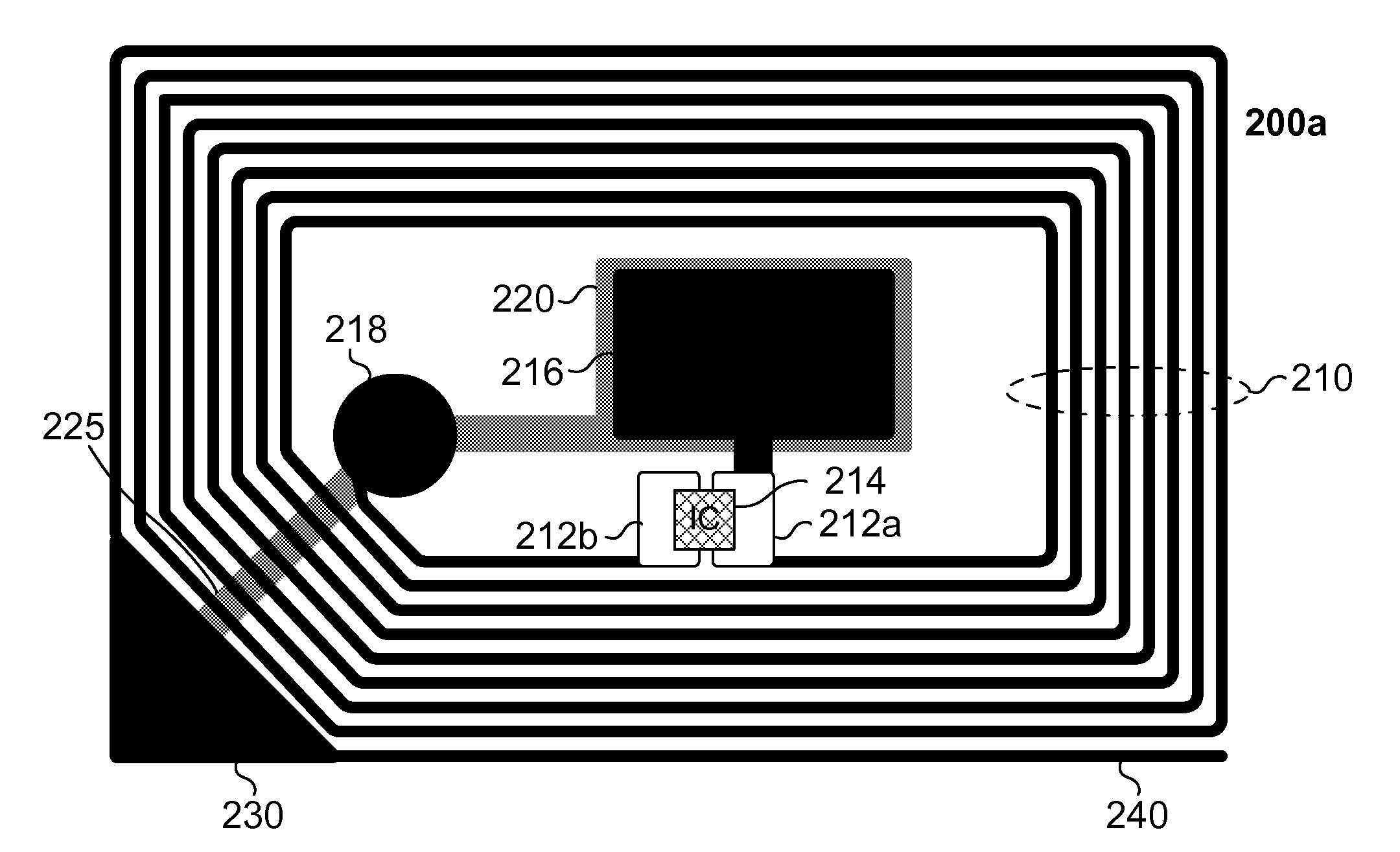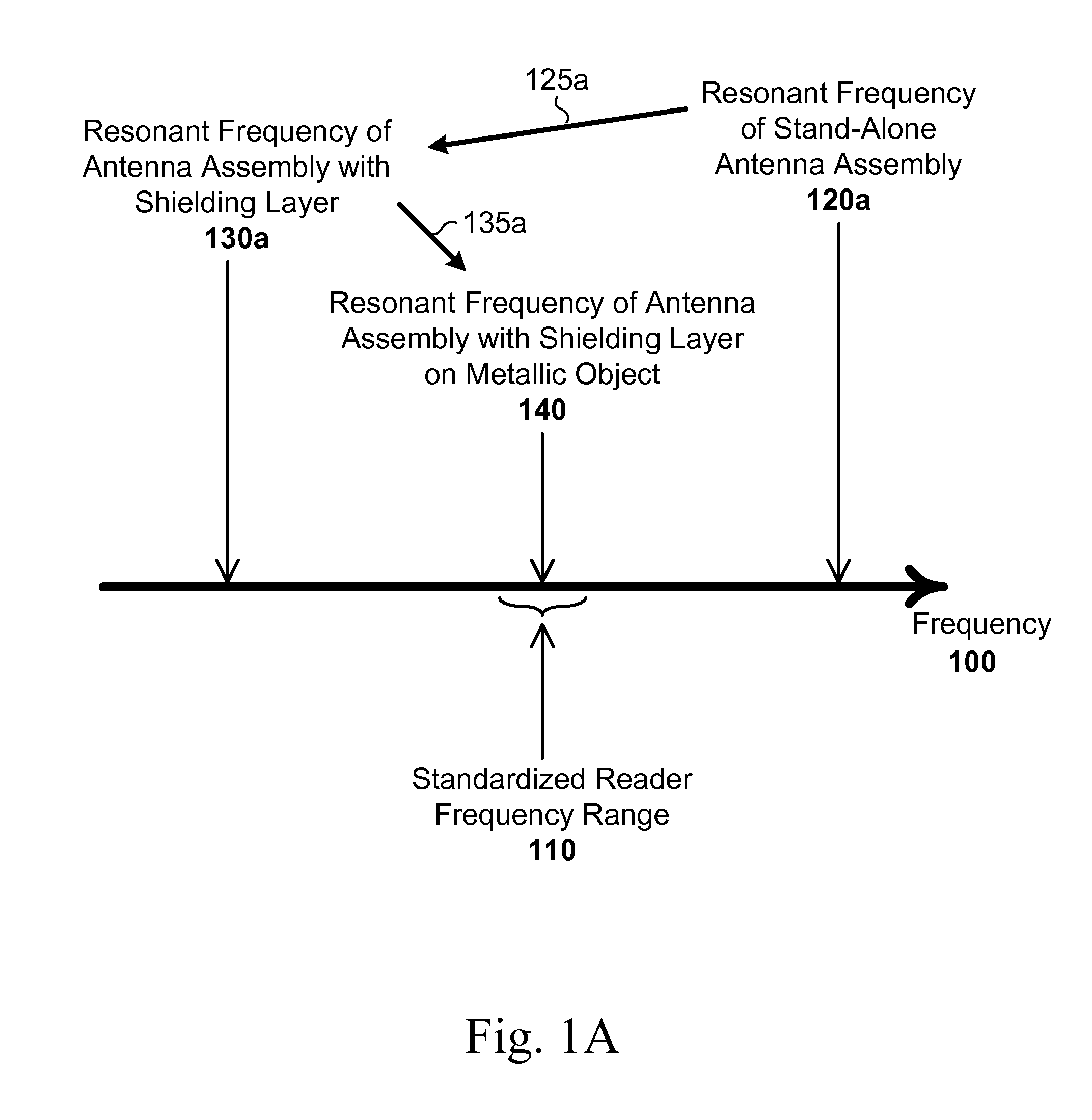RFID Label With Shielding Element
a shielding element and label technology, applied in the field of rfid structures, can solve the problems that rfid tags do not achieve optimal performance when placed on metallic objects, and achieve the effect of optimizing the on-metal performance of rfid labels/inlays and advantageously imporved performan
- Summary
- Abstract
- Description
- Claims
- Application Information
AI Technical Summary
Benefits of technology
Problems solved by technology
Method used
Image
Examples
Embodiment Construction
[0018]The present invention describes an improvement of the performance of RFID structures (e.g., RFID inlays, RFID labels) that use shielding material. In some embodiments in which the RFID structure is intended to be placed on a metallic object, optimization of RFID performance is achieved by tuning the RFID structure, including the antenna assembly and shielding layer, to closely align with a predetermined frequency range used by an RFID reader.
[0019]FIGS. 1A-1B are graphs illustrating resonant frequencies along a frequency axis 100. A RFID reader can generate alternating fields with a frequency within a predetermined frequency range 110. In some embodiments, the predetermined frequency range 110 conforms with one or more promulgated standards. For example, the International Telecommunication Union (ITU) Radiocommunication Sector (ITU-R) defines industrial, scientific and medical (ISM) radio bands for specific purposes. Examples of ISM bands used for RFID applications are: 6.765-...
PUM
| Property | Measurement | Unit |
|---|---|---|
| Frequency | aaaaa | aaaaa |
| Frequency | aaaaa | aaaaa |
| Frequency | aaaaa | aaaaa |
Abstract
Description
Claims
Application Information
 Login to View More
Login to View More - R&D
- Intellectual Property
- Life Sciences
- Materials
- Tech Scout
- Unparalleled Data Quality
- Higher Quality Content
- 60% Fewer Hallucinations
Browse by: Latest US Patents, China's latest patents, Technical Efficacy Thesaurus, Application Domain, Technology Topic, Popular Technical Reports.
© 2025 PatSnap. All rights reserved.Legal|Privacy policy|Modern Slavery Act Transparency Statement|Sitemap|About US| Contact US: help@patsnap.com



